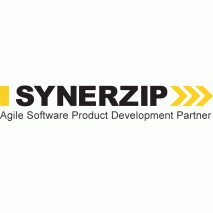WPF Online Training
WPF Training Courses



Course Duration
6 weeks
Live Project
Certification
Training Format
Live Online /Self-Paced/Classroom
Download Brochure & attend Free Online/Classroom Demo Session!
Key Features
Course Duration : 6 Weeks
Real-Time Projects : 2
Project Based Learning
EMI Option Available
Certification & Job Assistance
24 x 7 Support
WPF Syllabus
The detailed syllabus is designed for freshers as well as working professionals
1. Introduction to WPF: The Evolution of Windows Graphics
- Why WPF?
- What Is WPF?
- WPF Overview
- The Architecture of WPF
- A Simple WPF Application Using Visual Studio
2. MVVM: Understanding MVVM
- What is separation of concern
- Advantage of MVVM
- Create project using MVVM
3. XAML: Understanding XAML
- Role of XAML
- Properties and events in XAML
- Simple Properties and Type
Converters - Complex Properties
- Markup Extension
- Attached Properties
- Namespaces
- Loading and Compiling XAML
4. WPF Controls: Button
- Label
- TextBox
- ToolTip
- RadioButton
- CheckBox
- ListBox
- ComboBox
5. Layout: Sizing
- Positioning
- Transforms
- Canvas
- Drawing Shapes
- StackPanel
- WrapPanel
- DockPanel
- Grid
- Scrolling
- Scaling
6. Dependency Properties:Understanding Dependency Property
- Defining Dependency Property
- Registering Dependency Property
- How WPF uses Dependency Property
- Shared Dependency Property
- Attached Dependency Property
- Property Validation
- The Validation Callback
- The Coercion Callback
7. Routed Events: Understanding Routed Events
- Defining , Registering , and wrapping a Routed Events
- Sharing Routed Events
- Raising Routed Events
- Handling a Routed Events
8. Application: The Application Life Cycle
- Creating an Application object
- Application Events
9. Binding: The Binding Expression
- Binding Errors
- Binding Modes
- Retrieving Binding in code
- Multiple Bindings
- Binding to Objects that are not
elements - Binding to Objects that are not
elements
10. Commands: WPF Command Model
- Executing Commands
- Advanced Commands
11. Resources: Resources in WPF
- Binary Resources
- Logical Resources
- Static versus Dynamic Resources
12. Styles, Templates, Skins and Themes: Styles
- Style Sharing
- Triggers
- Templates
- Templates Parent’s Properties
- Skins
- Themes
13. Multithreading: Understanding multithreading model
- The Dispatcher
- The Dispatcher Object
- The Background Worker
WPF Classes in Pune
3RI Technologies offers specialized WPF online training for developers looking to master Windows Presentation Foundation. This WPF course covers everything from basic controls to advanced concepts, including data binding, custom controls, and MVVM (Model-View-ViewModel) architecture. With hands-on projects and real-world simulations, students will gain practical experience in creating responsive, interactive desktop applications.
The WPF training courses are designed for both beginners and experienced developers who want to strengthen their understanding of modern application development on the .NET platform. Throughout the course, students will learn how to design sophisticated user interfaces that are not only functional but visually appealing.
The program is taught by industry experts, offering flexible schedules and online sessions to accommodate working professionals. By the end of the training, students will be able to build advanced WPF applications, leveraging features like animations, multi-threading, and custom data templates.
3RI Technologies’ WPF online training provides the tools and knowledge necessary for career advancement in desktop application development. Additionally, the training prepares students for real-time project work and equips them with the skills required to excel in the competitive IT job market. Enroll today to begin your journey toward mastering WPF development.
OBJECTIVES :
- All our trainers have extensive experience in IT Industry and have years of experience in teaching.
- You will get assistance in resume making and interview preparation.
.NET Framework
The .NET Framework supports an object-oriented approach used to build applications on Windows.
It supports different languages, such as C #, VB, Cobol, Perl, .NET, etc.
It has a variety of tools and functions, such as classes, libraries, and APIs used to create, deploy, and run web services and various applications.
.MVC
MVC stands for Model View Controller, an architecture for creating .NET applications.
Model: they constitute the logical part of any application that manages the storage and retrieval of objects from the databases of an application.
Display: display the offers with the user interface part of an application.
They receive information about the model to display.
Controllers: manage user interactions, determine responses to user input and also make the visualization required for user interaction
WPF
WPF stands for Windows Presentation Foundation and is a development framework and a subsystem for the .NET Framework.
WPF is used to create Windows client applications that run on Windows.
WPF uses XAML as the front-end language and C # as the main language.
WPF was introduced as part of .NET Framework 3.0 as a Windows library for building Windows client applications and the next generation of Windows forms.
WPF is the mechanism responsible for creating, viewing, and editing user interfaces, documents, images, movies, and media on Windows 7 and later operating systems.
WPF is a collection of libraries with all the resources necessary to create, run, run, and manage Windows client applications.
WPF and XAML
XAML creates user interfaces for Windows and mobile applications that use the Windows Presentation Foundation (WPF), UWP, and Xamarin Forms.
The goal of XAML is simply to create user interfaces with an XML type markup language.
Most of the time, you use a designer to create your XAML, but you can modify the XAML directly by hand.
The scope of type (class, enumeration, etc.) is a namespace that is physically located in an assembly (DLL) of the .NET Framework library.
WPF vs ASP.NET
WPF or Windows Presentation Foundation is an application to create a graphical interface for the Windows operating system.
Here you can create, view, and edit your photos, documents, movies, and media from a single source.
It can manage Windows applications, including actions like execute, execute, and create.
He was able to clearly define the boundaries between the user interface and the surrounding business perspective.
WPF was able to manipulate the use of DirectX, incorporated at the lowest level of architecture, to provide functions such as animations, 2D and 3D drawings, various audio andvideo functions, fixed and adaptable documents, fixed documents and adaptable, data link, and other Skills Tables.
It is based on .NET 3.0 and uses XAML (Extensible Application Markup Language) functions, introducing the use of combo boxes, buttons, etc.
ASP.NET is a Microsoft product used to build dynamic websites, applications, and services.
It is part of the .NET Framework, and its predecessor was ASP (Active Server Pages) technology.
It is based on the Common Language Runtime (CLR), which allows developers to write ASP.NET code in any other .NET language.
Sites developed with ASP.NET are called Web forms with the extension .aspx.These web forms use the XHTML markup language, and features such as server-side web controls and user control that developers can use to manage the static and dynamic page content.Microsoft was able to separate static and dynamic content from a web form via extensions.All ASPX pages contain static content, while dynamic pages are linked to ASPX.VB or ASPX.CS or ASPX.FS files.
Free Career Counselling
WE are Happy to help you
Batch Schedule
Schedule Your Batch at your convenient time.
Sr. No.
Module Name
Batch Start Date
Batch Days
Timing
Enroll
FAQs
Most frequent questions and answers
After the course completion, an exam will be conducted to judge your knowledge along with the live project work completion check and you will be awarded a certificate from 3RI Technologies.
Yes, we conduct demo classes every weekend. Please contact us for more details.
I'm Interested in This Program

Our Clients







































